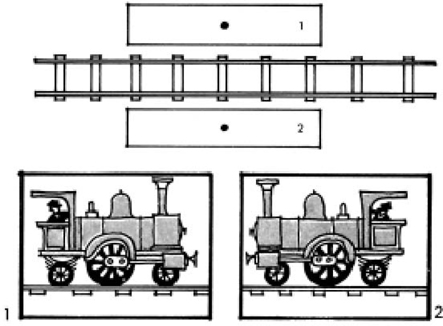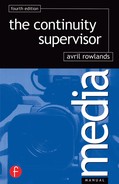If an object or person is to appear to travel from destination A to destination B seen in a series of shots of differing angle then it must continue to travel in the direction that has been established in the first shot.
A train is passing through a station. The camera, positioned on Platform 1, sees the train enter frame from the left and exit right. If the camera is then repositioned on Platform 2 it will see the same train entering from the right and exiting left. If these two shots were subsequently cut together, the viewer would think either that the train had changed its mind and changed direction or that it was another train.
Our old friend ‘crossing the line’ is again involved. In this case the direction of movement is the railway track. If the camera crosses the track then the direction of movement appears reversed.
Because the viewer only sees what the camera shows, from the camera’s position in relation to the subject, there is no external evidence to indicate that the camera itself has changed position, unless this is made apparent in some other way.
Therefore if one has established movement from left to right across the screen this direction must be continued unless:
- The object changes direction in front of the camera;
- The camera takes the viewer to a different position by tracking round the moving object;
- The object travels straight towards the camera or directly away from it;
- A cutaway is imposed;
- A shot is taken from within the moving object, i.e. inside the train or car. But beware in this instance of ensuring that the background is moving in the correct direction!

The shot of the train taken from Platform 1 and the shot from Platform 2 show the same train apparently travelling in opposite directions.
